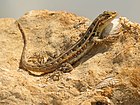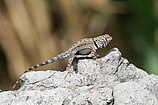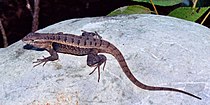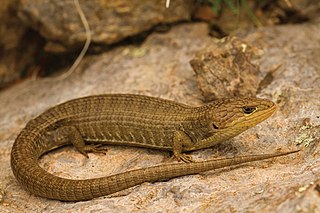Prairie lizard (Sceloporus consobrinus) Hardin Co. Texas
Cozumel spiny lizard (Sceloporus cozumelae), Celestún Biosphere Reserve, Yucatán, México. (12 February 2015)
Sagebrush spiny lizard (Sceloporus graciosus), Salt Lake County, Utah, USA (3 July 2009)
Sagebrush lizard (Sceloporus graciosus)
Desert spiny lizard (Sceloporus magister), Coconino County, Arizona, USA (6 October 2015)
Desert spiny lizard (Sceloporus magister), Coconino County, Arizona, USA (17 April 2011)
Northern rose-bellied Lizard (Sceloporus marmoratus), photographed in situ, Santa Ana National Wildlife Refuge, Texas, USA (14 April 2016).
Big Bend canyon lizard (Sceloporus merriami annulatus) Brewster County, Texas, USA (10 April 2014)
Minor spiny lizard (Sceloporus minor) a male photographed in situ, municipality of Victoria, Tamaulipas, Mexico (4 October 2008).
Cleft spiny lizard (Sceloporus mucronatus), archeological zone of Cantona, Puebla, Mexico (11 October 2013)
Western fence lizard (Sceloporus occidentalis), no data
Texas spiny lizard (Sceloporus olivaceus) basking on a fencepost, Highway 102, Colorado County, Texas, USA (26 March 2017)
Crevice spiny lizard (Sceloporus poinsettii), Mason County, Texas, USA (9 May 2014)
Spiny lizard (Sceloporus smithi), Municipality of San Lorenzo Albarradas, Oaxaca, Mexico (20 December 2011)
Torquate lizard (Sceloporus mikeprestoni) photographed in situ, municipality of Miquihuana, Tamaulipas, Mexico (5 October 2008).
Plateau fence lizard (Sceloporus tristichus), Emory County, Utah, USA, (17 September 2016)
Plateau fence lizard (Sceloporus tristichus), Uintah County, Utah, USA (9 June 2012)
Rose-bellied Lizard (Sceloporus variabilis), photographed in situ, municipality of Ocampo, Tamaulipas, Mexico (14 October 2005).
Florida scrub lizard (Sceloporus woodi), Palm Beach County, Florida, USA (16 December 2011)
Green spiny lizard (Sceloporus malachiticus) female (left) male (right), Central Highlands, Costa Rica (31 January 2020)
Green spiny lizard (Sceloporus malachiticus), female, Central Highlands, Costa Rica (31 January 2020)
Green spiny lizard (Sceloporus malachiticus), male, Central Highlands, Costa Rica (31 January 2020)
Eastern spiny lizard (Sceloporus spinosus) photographed in situ, municipality of Tula, Tamaulipas, Mexico (22 September 2003).



































